I’m here to share some helpful tips on budget-friendly grocery shopping for healthy meals. Eating nutritious food shouldn’t break the bank, and with the right strategies, you can maintain a healthy diet without spending a fortune. In this article, I’ll provide you with practical advice and smart shopping techniques to help you maximize your grocery budget while still enjoying delicious and wholesome meals. So, if you’re ready to learn how to make the most of your money at the grocery store without compromising on your health goals, read on!
Planning your grocery shopping
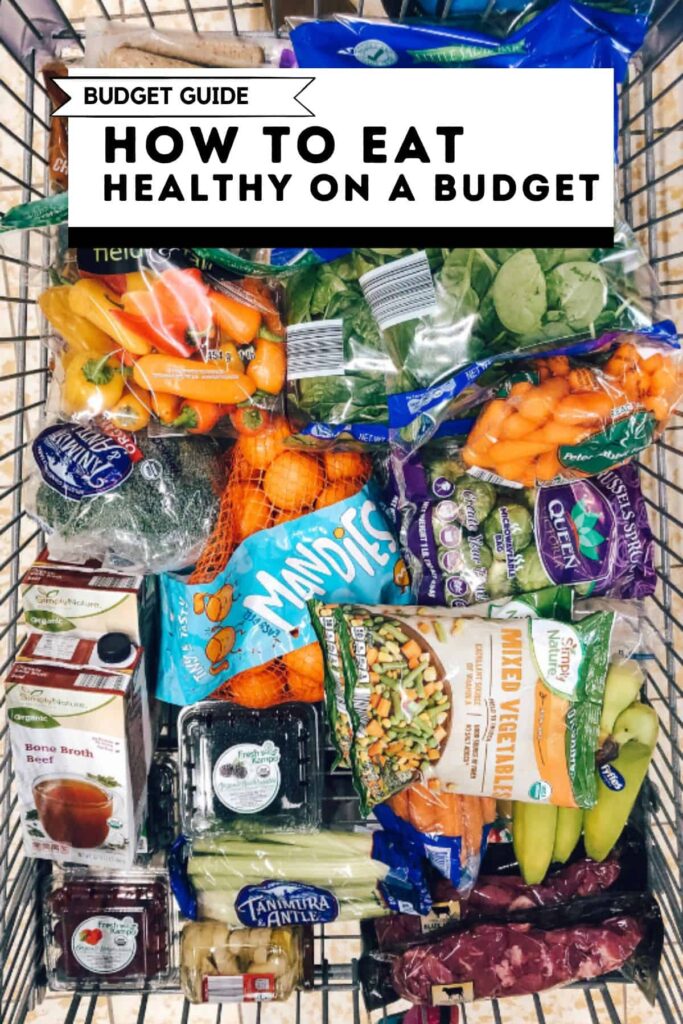
Create a meal plan
One of the keys to successful and budget-friendly grocery shopping is to create a meal plan. This involves taking some time to sit down and decide what meals you will be preparing for the week ahead. By planning your meals in advance, you can ensure that you buy only the ingredients you will need, reducing waste and saving money. It also helps you make healthier choices, as you can opt for nutritious and balanced meals.
Make a shopping list
Once you have your meal plan ready, it’s time to make a shopping list. This step is crucial to help you stay focused and avoid impulse purchases. Write down all the ingredients you will need for your planned meals, as well as any other household items you may need. Having a list makes your shopping trip more efficient and minimizes the chances of forgetting something. Plus, it keeps you on track with your budget and ensures that you buy only what you actually need.
Set a budget
Setting a budget for your grocery shopping is a great way to stay on top of your finances while still eating healthily. Determine how much you can afford to spend on groceries for the week, taking into account your income and other expenses. Having a budget in mind helps you make conscious choices while shopping, and encourages you to find more affordable options. It also prevents overspending and allows you to allocate your money towards other important areas of your life.
Choosing budget-friendly foods
Focus on whole foods
When it comes to eating healthy on a budget, focusing on whole foods is key. Whole foods, such as fruits, vegetables, whole grains, and lean proteins, are not only nutritious but also often more affordable than processed or pre-packaged alternatives. They provide essential nutrients and are generally cheaper per serving. Incorporate these foods into your meal plan to maximize the nutritional value of your meals without breaking the bank.
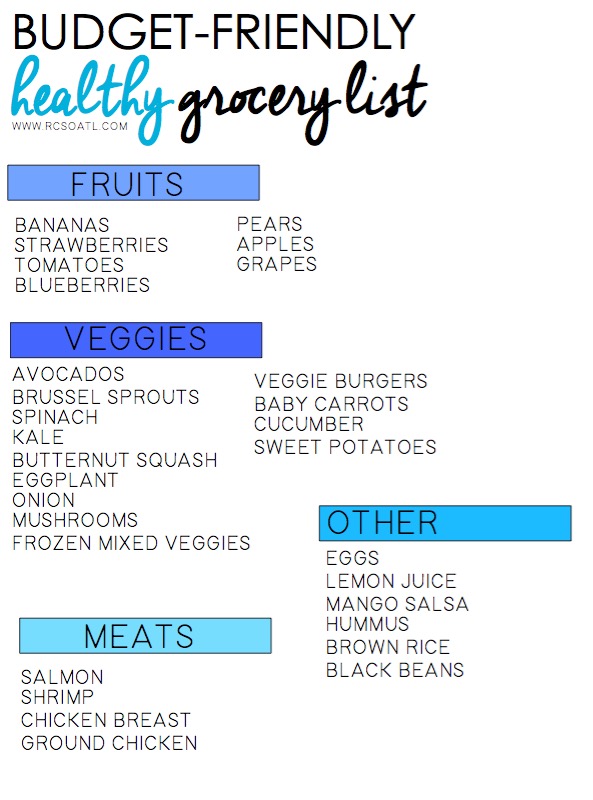
Buy in bulk
Buying in bulk is a cost-effective way to stock up on staple items and save money in the long run. Items like rice, pasta, beans, and nuts can be purchased in larger quantities, which often come with a lower price per unit. Be mindful of the shelf life of these items and ensure that you have enough storage space at home. Buying in bulk also reduces the need for frequent trips to the grocery store, saving you time and transportation costs.
Shop seasonal and local
Shopping for seasonal and locally sourced fruits and vegetables can help you save money while supporting local farmers. Seasonal produce tends to be more abundant and therefore cheaper, as it doesn’t have to be transported long distances. By buying local, you also cut out the middleman, reducing costs. Additionally, seasonal and local produce is usually at its peak freshness and flavor, making your meals more enjoyable.
Consider frozen fruits and vegetables
If fresh produce isn’t always in your budget or local availability is limited, consider opting for frozen fruits and vegetables. These are often just as nutritious as fresh options and can be a cost-effective alternative. Frozen fruits and vegetables have a longer shelf life, so you can buy them in bulk when they are on sale. They can be incorporated into a variety of dishes, such as smoothies, stir-fries, and soups, providing you with essential vitamins and minerals year-round.
Look for sales and discounts
Take advantage of sales, discounts, and special promotions offered by grocery stores. Keep an eye out for weekly flyers, coupons, and loyalty programs that can help you save money on your grocery shopping. Planning your meals and shopping list around these deals can lead to significant savings. Consider stocking up on non-perishable items when they are on sale, and remember to compare prices to ensure you are getting the best value for your money.
Navigating the grocery store
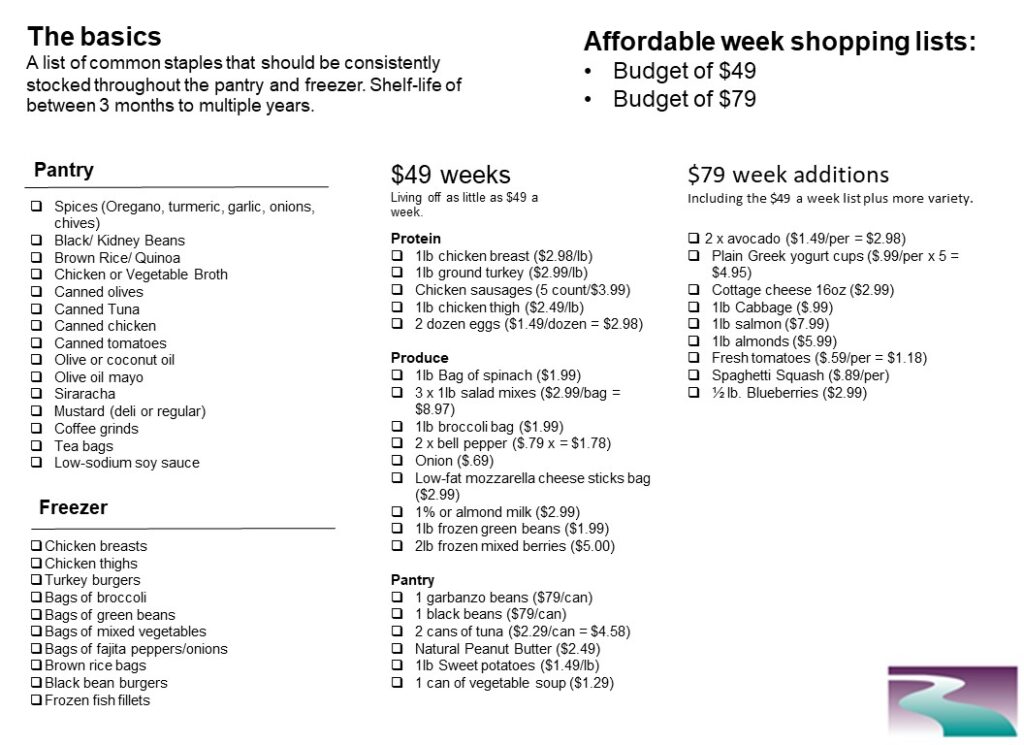
Shop the perimeter
A helpful strategy when grocery shopping is to focus on shopping the perimeter of the store. This is where you will typically find fresh produce, meats, dairy products, and whole foods. The inner aisles of the store often house processed and pre-packaged foods, which tend to be more expensive and less healthy. By steering clear of these aisles and sticking to the perimeter, you can ensure that you are making healthier choices and finding more budget-friendly options.
Compare prices and brands
Taking the time to compare prices and brands can make a big difference when it comes to budget-friendly grocery shopping. Look at the price per unit or ounce for different brands of the same item to determine which one offers the best value. Sometimes, store brands or generic options can be just as good as name brands but at a lower price. Don’t be afraid to try different brands and experiment with alternatives to find the best deals without compromising quality.
Avoid pre-packaged and processed foods
Pre-packaged and processed foods are often more expensive and less healthy than whole foods. They often contain additives, preservatives, and high levels of sodium, sugar, and unhealthy fats. These convenience foods may seem tempting, but they can quickly add up in terms of cost and impact on your health. Opting for whole, unprocessed ingredients allows you to have more control over the quality of your meals and helps you save money in the long run.
Read food labels
Reading food labels is an important habit to cultivate when shopping for groceries. Labels provide valuable information about the ingredients, nutritional content, and serving sizes of products. Understanding these labels can help you make informed decisions about the nutritional value and affordability of different foods. Pay attention to the ingredient list, serving sizes, and the presence of added sugars or unhealthy fats. Being aware of what you are buying allows you to prioritize healthier and more affordable options.
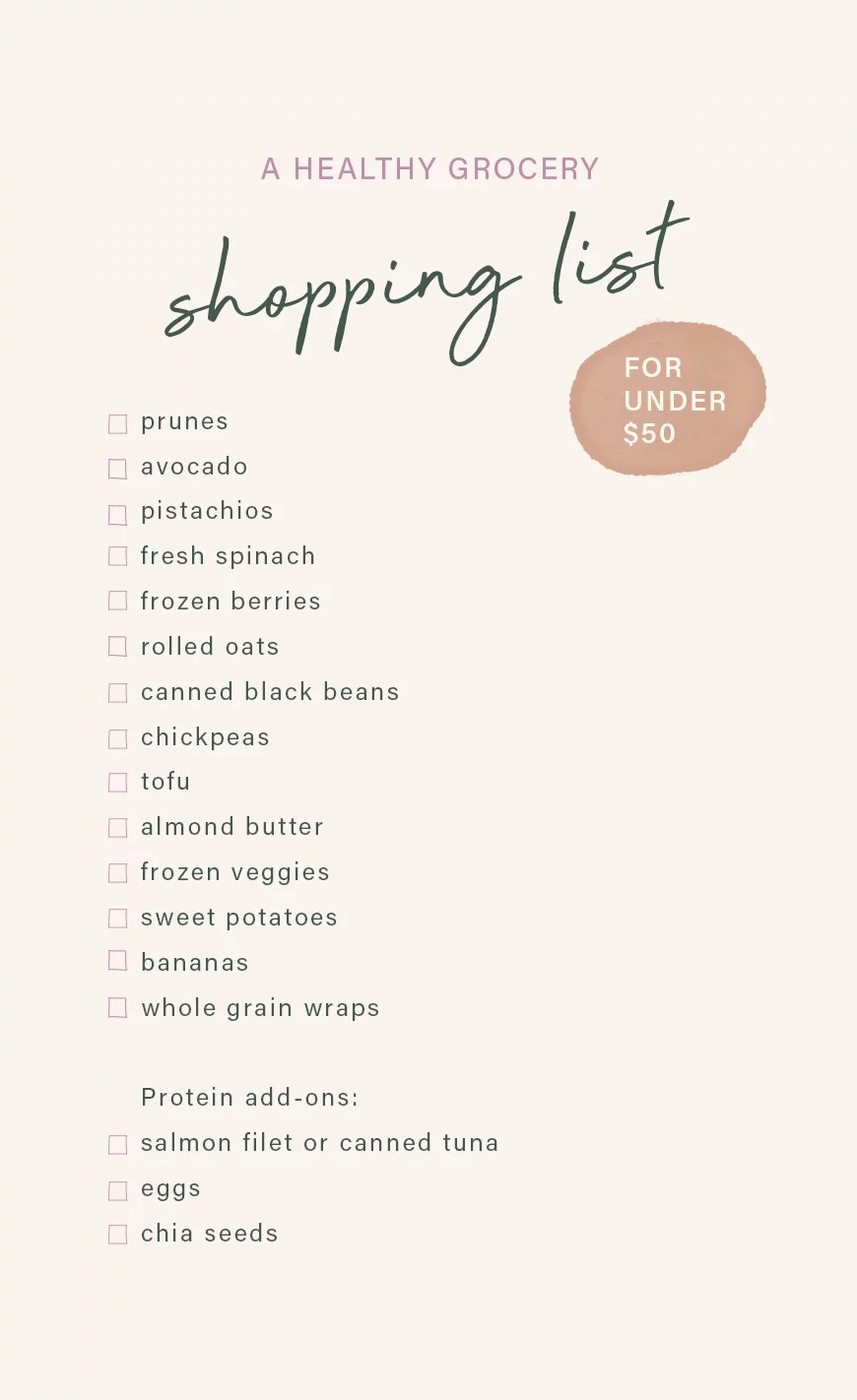
Try generic brands
Generic or store brands can be a budget-friendly alternative to name brands without sacrificing quality. These products are often manufactured by the same companies that produce name-brand items but are sold under the store’s brand name. They can offer significant cost savings while still delivering comparable taste and quality. Give generic brands a try, as they can help you cut costs without compromising the enjoyment and nutritional value of your meals.
Meal preparation and storage
Cook in bulk
Cooking in bulk is a smart strategy to save time, money, and effort in the kitchen. Prepare larger portions of your favorite meals and divide them into individual portions to be consumed throughout the week. This way, you can avoid the need for takeout or expensive convenience foods on busy days. Batch cooking also allows you to take advantage of bulk discounts when purchasing ingredients, reducing your grocery bill in the long run.
Use leftovers creatively
Leftovers are a valuable resource in the kitchen and can be repurposed into delicious and budget-friendly meals. Instead of letting leftovers go to waste, get creative and transform them into new dishes. For example, leftover roasted chicken can be used in sandwiches, soups, or salads. Overripe fruits can be blended into smoothies or used in baking. By using leftovers creatively, you can save money while still enjoying flavorful and nutritious meals.
Invest in reusable containers and bags
Investing in reusable containers and bags is not only an eco-friendly choice but can also help you save money. Instead of relying on single-use plastic bags and disposable containers, opt for durable reusable options. These containers can safely store leftovers, pre-prepped meals, or items bought in bulk. By reducing your reliance on single-use items, you avoid the need to constantly repurchase disposable containers, saving you money in the long term while minimizing environmental waste.
Smart shopping strategies
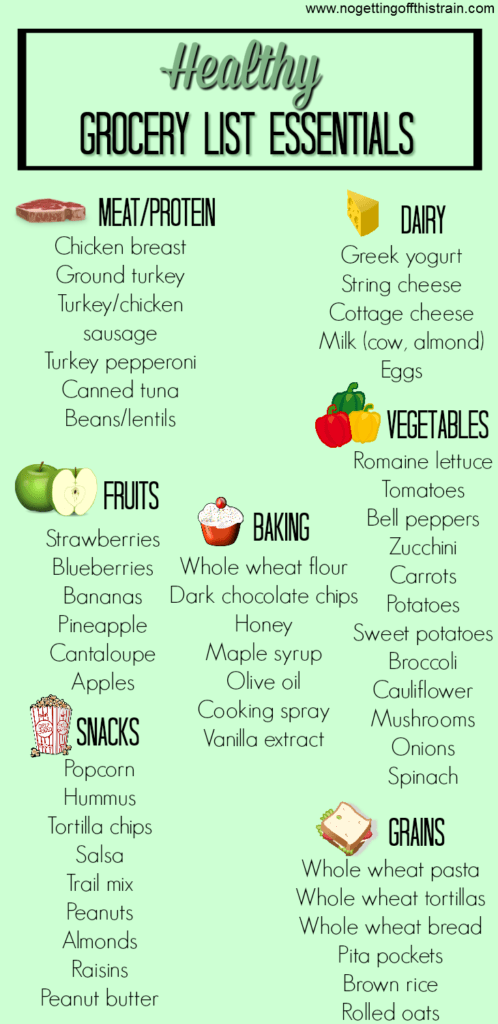
Shop at discount or warehouse stores
Consider shopping at discount or warehouse stores for affordable groceries. These stores often offer lower prices on bulk items and have a wide variety of products available. While they may not have the same selection as traditional grocery stores, they can be a cost-effective option for stocking up on pantry staples and non-perishable items. Just be sure to compare prices and sizes to ensure that you are getting the best value for your money.
Use coupons and apps
Coupons and mobile apps are valuable tools for saving money on groceries. Look for coupons in newspapers, online platforms, or store flyers. Additionally, many grocery stores have their apps or loyalty programs that offer exclusive discounts and rewards. These apps often contain digital coupons and allow you to track your spending and savings. Take advantage of these money-saving opportunities to stretch your budget and reduce your grocery expenses.
Join a loyalty program
Joining a loyalty program at your favorite grocery store can provide you with additional savings and benefits. Many stores offer exclusive discounts, personalized offers, or reward points that can be redeemed for future purchases. By participating in these programs, you can enjoy cost savings while accumulating rewards over time. Loyalty programs are usually free to join and can help you make your grocery shopping more affordable and rewarding.
Plan a grocery trip during off-peak hours
Planning your grocery trip during off-peak hours can make your shopping experience more pleasant and potentially save you money. Avoiding crowded times allows you to navigate the aisles more easily and avoid long checkout lines. It also gives you a chance to take advantage of any discounted items that may be marked down closer to closing time. Planning your shopping trips strategically can help reduce stress and enhance your overall grocery shopping experience.
Tips for saving money at home
Grow your own fruits and vegetables
If you have the space and the green thumb, growing your own fruits and vegetables can be a rewarding and cost-effective way to save money on groceries. Planting your own garden allows you to have fresh produce at your fingertips without the added cost of buying it from the grocery store. Start small with a few herbs or salad greens if you’re a beginner, and gradually expand your garden to include other vegetables and fruits. Not only will you save money, but you’ll also enjoy the satisfaction of harvesting your own homegrown produce.
Reduce food waste
Reducing food waste is not only environmentally responsible but also helpful for your budget. Make a conscious effort to minimize food waste by properly storing perishable items, planning meals to use up ingredients before they expire, and repurposing leftovers. By making use of every edible part of your ingredients and being mindful of portion sizes, you maximize the value of your grocery purchases and ultimately save money.
Use pantry staples
Pantry staples are essential items that have a long shelf life and can be used as a base for a variety of meals. Items like rice, pasta, canned beans, tomato sauce, and spices are versatile ingredients that can be incorporated into various recipes. By keeping these staples stocked in your pantry, you always have a foundation for quick and inexpensive meal options. Pantry staples are often inexpensive, and buying them in larger quantities can save you money in the long run.
Opt for tap water
Choosing tap water over bottled beverages is not only friendlier to your wallet but also better for the environment. Drinking tap water is a cost-effective way to stay hydrated and eliminates the need to buy expensive bottled drinks. If you prefer flavored water, you can infuse it with fresh fruits or herbs at home for a fraction of the cost of pre-packaged flavored water. Embracing tap water as your main source of hydration is an easy and budget-friendly choice.
Healthy and affordable recipe ideas
Vegetable stir-fry with brown rice
A vegetable stir-fry with brown rice is a delicious and budget-friendly meal idea. Stir-frying a mix of colorful vegetables, such as bell peppers, broccoli, carrots, snap peas, and onions, in a simple sauce made from soy sauce, garlic, and ginger, creates a nutritious and flavorful dish. Serve it over brown rice, which is more affordable and provides additional fiber and nutrients compared to white rice. This meal is not only affordable but also customizable based on the vegetables you have available or on sale.
Quinoa and black bean salad
Quinoa and black bean salad is a protein-packed and budget-friendly meal option. Cook quinoa according to package instructions and let it cool. Mix it with canned black beans, corn, diced tomatoes, chopped cilantro, lime juice, and your favorite seasonings. This refreshing and satisfying salad can be enjoyed as a main dish or as a side. It is not only affordable but also easy to prepare and can be kept in the fridge for several days, making it a great option for meal prepping.
Oatmeal with fresh fruits
Starting your day with a hearty bowl of oatmeal topped with fresh fruits is a healthy and economical breakfast choice. Oats are a budget-friendly whole grain that provides a good source of fiber and nutrients. Cook your oats with water or milk, and add your favorite fruits, such as berries, sliced bananas, or diced apples. To enhance the flavor, sprinkle some cinnamon or drizzle a small amount of honey or maple syrup. This simple and nutritious breakfast will keep you energized and satisfied until lunchtime.
Homemade vegetable soup
Homemade vegetable soup is a versatile and affordable meal idea that allows you to use up any leftover vegetables or pantry staples you have on hand. Start by sautéing onions, garlic, and your choice of vegetables in a pot. Add vegetable broth, canned tomatoes, and seasonings. Simmer until the vegetables are tender and the flavors meld together. This comforting and nutrient-rich soup can be enjoyed as a light lunch or as a starter to a larger meal. It can also be made in large batches and frozen for future meals.
Pasta with roasted vegetables
Pasta with roasted vegetables is a simple and budget-friendly meal that combines the flavors of perfectly cooked pasta with the sweetness of roasted vegetables. Toss your choice of vegetables, such as zucchini, eggplant, cherry tomatoes, and bell peppers, with olive oil, salt, pepper, and any desired seasonings. Roast them in the oven until tender and slightly caramelized. Cook your favorite pasta according to package instructions, and toss it with the roasted vegetables. Add a sprinkle of Parmesan cheese or a drizzle of olive oil for extra flavor. This colorful and satisfying dish is both affordable and delicious.
In conclusion, grocery shopping on a budget doesn’t mean sacrificing the quality or healthiness of your meals. By following these tips and strategies, you can make smart choices, save money, and still enjoy delicious and nutritious food. Creating a meal plan, shopping for budget-friendly foods, navigating the grocery store wisely, and employing smart shopping strategies are all essential steps towards achieving healthy and affordable meals. Additionally, incorporating meal preparation and storage techniques, as well as implementing money-saving tips at home, can further stretch your grocery budget. Finally, exploring a variety of healthy and affordable recipe ideas allows you to add flavor and enjoyment to your meals without breaking the bank. With a little planning and resourcefulness, you can shop smart, eat well, and keep your budget intact.


